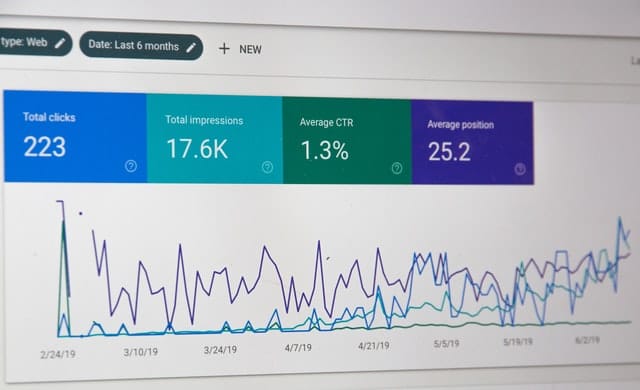If you’re like most businesses, you’re always looking for ways to improve your content strategy. But even the best strategies can have weaknesses, and one of those weaknesses may be a content gap.
Content gaps can have a serious impact on your ability to reach your target audience and achieve your business goals. No matter the cause, a content gap needs to be addressed if you want to stay ahead of the competition.

What Are Content Gaps?
A content gap is simply a hole in your content marketing strategy. There are many reasons why a content gap may occur. Maybe you don’t have enough content (or content ideas), or maybe the content you have is outdated or not relevant to your target audience. Maybe your keyword research uncovered that your competitors rank for target keywords you’re not.
Whatever the reason, a content gap can have a serious impact on your SEO strategy and your search visibility. This can affect your ability to reach your target audience, reducing the chances you achieve your business goals.
No matter the cause, you need to identify gaps and addressed them if you want to stay ahead of the competition.
Why is it Important to Fill a Content Gap?
Why is it so important to fill a content gap? There are a few key reasons:
Filling a content gap can help you to improve your search engine rankings
When you have a well-rounded content strategy that covers all of the important topics and target keywords related to your business, you’re more likely to rank higher on SERPs.
Filling a content gap can help you to attract more visitors to your website
By creating content that’s relevant to your target audience and addresses their needs and interests, you’ll be able to attract valuable traffic to your website. And the more traffic you have, the more opportunities you have to convert those visitors into customers.
Filling a content gap can help you to improve brand awareness
When you publish content that’s relevant to your target audience, you’re not only helping to attract more visitors to your website, but you’re also helping to raise awareness of your brand and what you have to offer. Plus, if they’re interested, they’re going to come back for more and tell other people.
Filling a content gap can help you to build better relationships with your customers
By providing valuable content that’s relevant to your target audience, you’re helping to build better relationships with those customers.
When someone sees you as an authority in your field, they’ll be more likely to come back to your website in the future. They’ll also be more likely to progress down your sales funnel and eventually purchase your products or services.
Now that you know what a content gap is, how to find them, and why it’s important to fill them, it’s time to start addressing them. Don’t let a content gap hold your business back – address the issue and start seeing results.

What Are The Different Types of Content Gaps
There are many different types of content gaps, and each one can present its own unique challenges for content marketers. The most common types are the following:
Missing Content
When people think of content gaps, missing content is probably what comes to mind first. Missing content, or idea gaps, is where there is a significant hole in your content marketing strategy. You may create content regularly, but competitor analysis has found there are topics you aren’t covering.
When looking to see if there are any idea gaps, consider the following things.
- Do you create content that appeals to a wide range of readers? As an example, let’s assume you have a personal finance website and your main focus is investing. Do you have blog articles that help a new investor understand the stock market? Do you also have content on more complex topics like investing in options or cryptocurrencies?
- Are your readers interested in the topics you’re writing about? One easy way to figure this out is to look at your bounce rate within Google Analytics. If people are bouncing off a page pretty quickly and frequently, they probably aren’t too interested in what you’re writing about.
Missing Keywords
Another big content gap that many content teams have are missing keywords.
You’ve probably put together a lot of great content that might be ranking well in SERPs, but are you missing anything?
When many content teams are putting together their content marketing strategies, they focus on short, one or two word keywords. These have great search volume but are typically difficult to rank well for. Long-tail keywords on the other hand have less search volume, but also less competition.
If your content marketing plan is missing keywords, they’re probably the long-tail keywords.
That being said, put together some content ideas with relevant keywords that have three, four, or even five words. You’ll find these will help you drive organic traffic much quicker. Plus, the people searching for these terms tend to be further down the sales funnel and are ready to buy.
Multimedia Gaps
There have been several studies performed recently showing that people get bored quickly when they’re reading an article. This is probably one reason why Google puts more of an emphasis on content creators producing easy-to-read content with short sentences and paragraphs.
But people also want to be able to digest information in ways other than through written content. They want to watch videos.
A recent study put together by Wyzow found that 73% of people would prefer to watch a video instead of reading an article. Plus, if you’re a B2C or even a B2B brand, 88% of people have been convinced to buy a product or service because of a video.
If you’re not producing videos, there is a gap in your content that needs to get filled.
How Do You Find a Content Gap? With a Content Gap Analysis
There are many different ways to find a content gap. One of my preferred methods is to do a content gap analysis. The content gap analysis process involves taking a close look at the existing content you’ve already created. Start by asking yourself the following questions:
- Are there any topics/keywords you’re not covering?
- Are you targeting the wrong keywords?
- Do you have content but it’s not ranking well?
- Is your existing content outdated or irrelevant?
- Do you have gaps in terms of content length or format?
If you answer yes to any of these, you have content gaps. If you’re unsure, then it’s time to dig in a little deeper.
The last thing you or your team want to do is manually analyze each piece of content you’ve written. This could be hundreds, if not thousands of blog posts and even sales pages. Instead, you can perform a content gap analysis with an SEO tool like SEMRush or KWFinder.
This will allow you to dig into the keywords your website ranks well for. It will also give you a birds-eye view of the content that performs the best. Next, you can pull a report of your closest competitors and see what they’re doing. My guess is you’ll probably see some pretty noticeable deficiencies.
Addressing a content gap is important, but it’s not always easy. If you’re not sure where to start, the best thing to do is to get help from a content marketing expert. Someone like myself can help you identify and fill any content gaps in your strategy.
The Bottom Line
Are you filling all of your content gaps?
If not, you could be missing out on a lot of potential customers.
Whatever the cause, a content gap can have a serious impact on your content marketing efforts. They can lead to lower ROIs, lower website traffic, and lower customer engagement.
Luckily, there are a few things you can do to fill your content gaps and improve your content marketing strategy.






